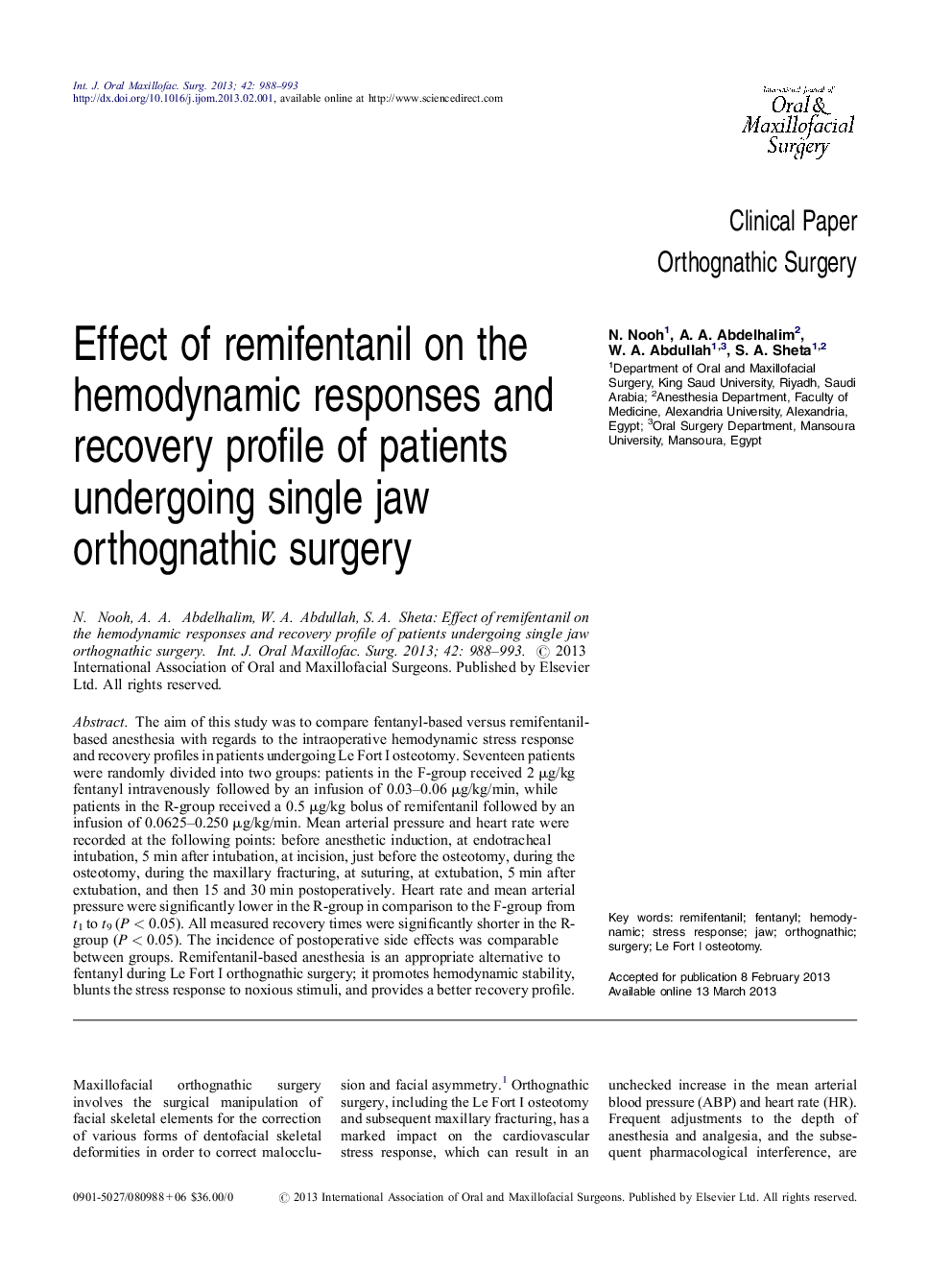| Article ID | Journal | Published Year | Pages | File Type |
|---|---|---|---|---|
| 3132658 | International Journal of Oral and Maxillofacial Surgery | 2013 | 6 Pages |
The aim of this study was to compare fentanyl-based versus remifentanil-based anesthesia with regards to the intraoperative hemodynamic stress response and recovery profiles in patients undergoing Le Fort I osteotomy. Seventeen patients were randomly divided into two groups: patients in the F-group received 2 μg/kg fentanyl intravenously followed by an infusion of 0.03–0.06 μg/kg/min, while patients in the R-group received a 0.5 μg/kg bolus of remifentanil followed by an infusion of 0.0625–0.250 μg/kg/min. Mean arterial pressure and heart rate were recorded at the following points: before anesthetic induction, at endotracheal intubation, 5 min after intubation, at incision, just before the osteotomy, during the osteotomy, during the maxillary fracturing, at suturing, at extubation, 5 min after extubation, and then 15 and 30 min postoperatively. Heart rate and mean arterial pressure were significantly lower in the R-group in comparison to the F-group from t1 to t9 (P < 0.05). All measured recovery times were significantly shorter in the R-group (P < 0.05). The incidence of postoperative side effects was comparable between groups. Remifentanil-based anesthesia is an appropriate alternative to fentanyl during Le Fort I orthognathic surgery; it promotes hemodynamic stability, blunts the stress response to noxious stimuli, and provides a better recovery profile.
